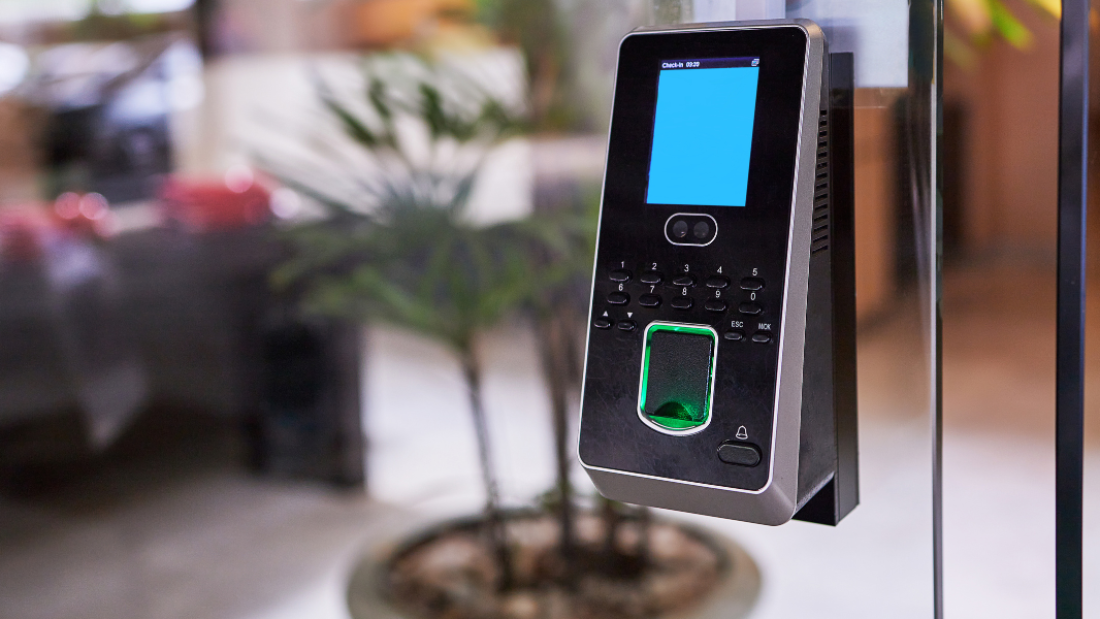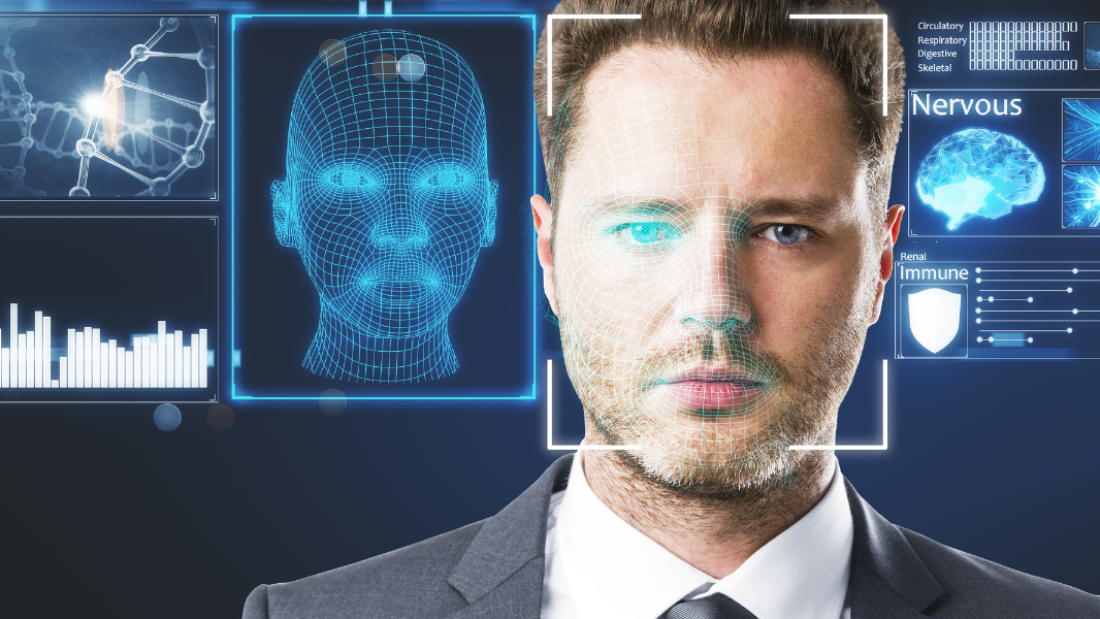Did you know that by 2024, the global face recognition market is projected to reach a staggering value of $12.92 billion? This cutting-edge technology is revolutionizing security systems, unlocking smartphones, and enhancing customer experiences worldwide. Face recognition algorithms analyze unique facial features for identification and verification purposes, offering unparalleled convenience and security in various industries.
Discover how it works, its applications across diverse sectors like banking, retail, and law enforcement, and the implications for privacy and security. Stay tuned to explore the endless possibilities and challenges of this rapidly evolving innovation.
Technological Advancements in Real-Time Face Recognition
Artificial Intelligence Integration
Artificial intelligence (AI) plays a pivotal role in enhancing recognition accuracy in real-time face recognition systems. By utilizing AI algorithms, these systems can continuously learn and adapt to new faces, improving their ability to accurately identify individuals. This integration enables the system to distinguish between similar faces with higher precision, reducing the chances of false positives.
Faster Processing Algorithms
The development of faster processing algorithms has revolutionized real-time face recognition technology. These algorithms enable rapid analysis of facial features, allowing for swift identification of individuals in dynamic environments. With the implementation of machine learning techniques, these systems can continuously optimize their performance, ensuring high-speed and accurate recognition capabilities.
Enhanced Camera Technology
Advancements in camera technology have significantly contributed to improving image capture quality in various lighting conditions for real-time face recognition. The integration of high-resolution sensors and low-light imaging capabilities enhances the system’s ability to capture clear and detailed facial images, even in challenging lighting environments. Moreover, the incorporation of infrared cameras enables face recognition systems to operate effectively in low-light or nighttime settings, ensuring reliable identification regardless of the lighting conditions.
Benefits of Real-Time Face Recognition
Speed and Efficiency
Real-time face recognition projects offer unmatched speed and efficiency in identification processes. Compared to traditional methods, this technology can swiftly analyze and match faces within milliseconds, making it ideal for high-traffic areas like airports and stadiums.
The system can process vast amounts of data rapidly, enabling quick identification of individuals in real-time scenarios. This swift response time is crucial in security-sensitive environments where immediate action may be necessary.
Reduction of Human Error
One of the significant advantages of real-time face recognition lies in its ability to reduce human error in identity verification processes. By automating the identification task, the system minimizes the risk of inaccuracies that can occur with manual checks, leading to more reliable results.
The technology’s accuracy in matching faces eliminates the potential for misidentification, ensuring that access control systems and security protocols are robust and dependable. This reduction in human error enhances overall security measures in various sectors, from law enforcement to commercial establishments.
Data Collection for Analytics
Real-time face recognition projects not only aid in identification but also gather valuable data for analytics and insights across different sectors. By capturing demographic information and behavioral patterns, the system enables organizations to analyze customer preferences, foot traffic, and other metrics for informed decision-making.
In retail settings, this data can be utilized to personalize marketing strategies and enhance customer experiences. Similarly, in smart cities, the technology can provide valuable insights into urban mobility patterns and public behavior for improved city planning initiatives.
Applications in Security and Surveillance
Public Safety
Facial recognition technology plays a crucial role in enhancing public safety by aiding in crime prevention. Law enforcement agencies leverage this technology to identify suspects, track missing persons, and enhance overall security measures. By swiftly identifying individuals of interest, authorities can prevent potential crimes and ensure the safety of communities.
Facial recognition is extensively used in monitoring high-risk areas or events to enhance security measures. For instance, during large-scale events like sports matches or concerts, facial recognition systems can scan crowds for known troublemakers or individuals with outstanding warrants. This proactive approach helps security personnel intervene before any incidents occur, maintaining a safe environment for attendees.
Integration with Surveillance Systems
The integration of facial recognition technology with existing surveillance systems significantly improves threat detection capabilities. By combining facial recognition algorithms with CCTV cameras, security personnel can quickly identify suspicious individuals in real-time. This seamless integration allows for immediate alerts to be sent to authorities when unauthorized persons are detected in restricted areas.
Pros:
Enhances public safety by preventing crimes
Improves threat detection in high-risk areas
Enables quick identification of suspects in real-time
Cons:
Privacy concerns regarding mass surveillance
Potential misuse of facial recognition data
Accuracy issues with certain demographics
Real-Life Example
In a recent case study, a major city implemented facial recognition technology in its public transportation system to combat petty crimes and enhance passenger safety. By installing cameras equipped with facial recognition software at key stations, transit authorities were able to identify repeat offenders and reduce instances of theft and vandalism. This proactive approach not only deterred criminal activities but also provided law enforcement with valuable insights for future crime prevention strategies.
Access Control and Authentication
Streamlining Entry Processes
Face recognition technology revolutionizes access control by swiftly identifying individuals, enhancing security measures. This technology expedites entry processes in secure locations, reducing manual verification time significantly. By automating authentication through facial recognition, organizations bolster their security protocols efficiently.
Multi-Factor Authentication
Implementing multi-factor authentication with face recognition fortifies security systems by combining multiple verification methods. This approach enhances the overall security posture, ensuring robust protection against unauthorized access attempts. Integrating facial recognition with other authentication factors like passwords or biometrics provides an additional layer of defense.
Enhancing User Experience
The integration of face recognition technology not only strengthens security but also elevates user experience by minimizing wait times and enhancing convenience. Users can swiftly gain access to secure areas without the need for physical credentials or extensive verification processes. This seamless authentication method improves operational efficiency and user satisfaction.
Enhancing Customer Service
Personalized Interactions
Face recognition technology enhances customer service by allowing businesses to personalize interactions in retail environments. By utilizing facial data, companies can tailor their services based on individual customer preferences and behaviors. This level of personalization creates a more engaging and satisfying experience for customers, leading to increased loyalty and satisfaction.
Utilizing facial recognition technology, businesses can analyze customer behavior and preferences to provide targeted recommendations and promotions. By understanding customer preferences through facial data, companies can offer personalized product suggestions, discounts, or incentives tailored to each customer’s unique tastes and interests. This targeted approach not only enhances the overall customer experience but also increases the likelihood of repeat purchases.
Instant Recognition
One significant advantage of implementing face recognition technology in retail settings is the potential for instant recognition of returning customers. Loyalty programs can be enhanced by utilizing facial recognition to identify and reward returning customers instantly. This seamless recognition process eliminates the need for physical loyalty cards or cumbersome identification procedures, streamlining the customer experience and fostering a sense of appreciation and value among loyal patrons.
Streamlined customer experience
Enhanced loyalty programs
Improved customer satisfaction
Real-Time Face Recognition in Healthcare
Utilizing OpenCV Package
OpenCV, a widely used open-source computer vision library, offers specific functions for implementing real-time face recognition. By leveraging the opencv package, healthcare facilities can efficiently integrate this technology into their systems.
Enhancing Patient Identification
Implementing real-time face recognition in healthcare can significantly improve patient identification accuracy. With the ability to set up facial recognition systems, hospitals can ensure a seamless and secure way to match patients with their medical records.
Monitoring Patient Conditions
One of the key advantages of real-time face recognition in healthcare is the potential to monitor patient conditions through facial expression analysis. By analyzing facial expressions in real time, healthcare providers can gain valuable insights into a patient’s emotional state and well-being.
Ensuring Security and Privacy
Integrating face recognition technology can enhance security measures within healthcare facilities. By helping to restrict access to sensitive areas and confidential information, facial recognition systems play a crucial role in safeguarding patient data and ensuring privacy compliance.
Addressing Accuracy and Reliability Issues
Common Challenges
Face recognition systems often encounter error messages due to variations in lighting, facial expressions, and poses. These factors can lead to inaccuracies in identifying individuals, impacting the system’s confidence index.
To address these challenges, developers focus on minimizing errors by refining algorithms to pay more attention to key facial features. By enhancing the system’s ability to detect subtle differences, accuracy can be significantly improved.
Importance of Diverse Training Datasets
One crucial aspect influencing face recognition accuracy is the amount and diversity of data used for training. Limited datasets may result in biased algorithms that struggle with recognizing faces from diverse demographics.
By incorporating a wide range of facial characteristics, including different skin tones, ages, and genders, developers can create more inclusive systems. This approach helps improve accuracy across various population groups.
Ongoing Research Efforts
Researchers are actively working on reducing false positives and negatives in face recognition technology. By exploring advanced techniques like deep learning and neural networks, they aim to enhance the system’s ability to distinguish between similar faces accurately.
Moreover, ongoing studies focus on developing sophisticated error detection mechanisms to identify and rectify discrepancies in facial recognition results. These efforts contribute to increasing the overall reliability of face recognition systems.
Privacy and Data Security Concerns
Biometric Data Collection
Collecting biometric data for face recognition raises privacy concerns due to the potential for misuse. This data includes unique identifiers like facial features, which, if compromised, can lead to identity theft.
Biometric data is highly sensitive as it is unique to each individual, making it crucial to safeguard against unauthorized access. The use of this data without consent raises ethical questions regarding data privacy and security.
Regulations and Guidelines
Regulations and guidelines play a vital role in governing the use of face recognition technology. For instance, the General Data Protection Regulation (GDPR) in Europe sets strict rules on data processing and user consent.
Organizations must adhere to these regulations to ensure compliance with legal standards. Failure to do so can result in hefty fines and damage to the organization’s reputation.
Transparency and Consent
Transparency and consent are essential aspects of data collection practices. Users should be informed about how their data is being used and have the right to opt-out if they choose.
Obtaining clear consent from individuals before collecting their biometric data establishes a trustworthy relationship between users and organizations. This practice fosters transparency and ensures that data usage is ethical.
Future Trends and Innovations
Quantum Computing
Face recognition technology is set to undergo significant advancements with the rise of quantum computing. The computational power offered by quantum computers can revolutionize the processing of vast amounts of data for facial recognition algorithms. This leap in technology is expected to enhance accuracy and speed in identifying individuals from images.
Augmented Reality Integration
The future of face recognition lies in its integration with augmented reality (AR) and virtual environments. By merging these technologies, users can experience seamless interactions where faces are instantly recognized, leading to personalized experiences. This integration can pave the way for innovative applications in gaming, retail, and social media platforms.
Ethical Considerations
As face recognition technology evolves, ethical considerations become more crucial. Balancing innovation with privacy rights is a key challenge that needs to be addressed. The use of facial recognition raises concerns about data security, surveillance, and potential misuse. Striking a balance between technological advancement and protecting individuals’ privacy is essential for the responsible development of this technology.
Summary
Real-time face recognition technology has revolutionized various sectors, from security and surveillance to healthcare and customer service. The advancements in accuracy and speed have paved the way for enhanced access control, authentication processes, and personalized customer interactions. Despite concerns surrounding privacy and data security, ongoing innovations aim to address these issues and improve overall reliability.
As you delve into the world of real-time face recognition, consider the potential it holds for streamlining operations, increasing security measures, and providing tailored services. Stay informed about emerging trends and best practices to leverage this technology effectively in your respective fields. Embrace the possibilities it offers while remaining vigilant about safeguarding sensitive information and maintaining ethical practices.
Frequently Asked Questions
What are the key benefits of real-time face recognition technology?
Real-time face recognition technology offers enhanced security, streamlined authentication processes, improved customer service experiences, and innovative healthcare applications.
How is real-time face recognition used in security and surveillance?
Real-time face recognition is utilized for access control, monitoring public spaces, identifying suspects, enhancing forensic investigations, and ensuring secure premises.
What are the primary applications of face recognition technology in healthcare?
Face recognition technology in healthcare is applied for patient identification, access control to restricted areas, tracking medication administration, and improving overall operational efficiency.
How do face recognition systems address accuracy and reliability concerns?
Face recognition systems employ advanced algorithms, machine learning models, and continuous training to enhance accuracy, reduce false positives, and ensure reliable performance.
What are the main privacy and data security concerns associated with face recognition technology?
Privacy concerns include unauthorized access to personal data, potential misuse of biometric information, lack of consent for data collection, and risks of data breaches leading to identity theft.









